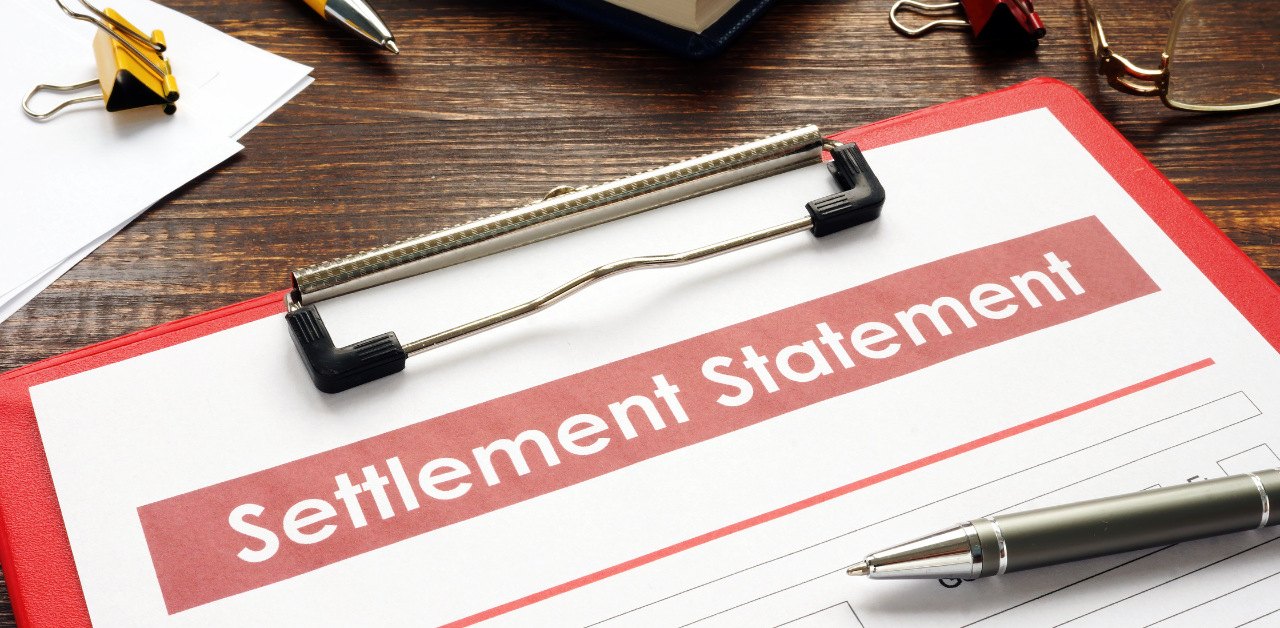
If you’ve been injured in a car accident, slip and fall case, or medical malpractice incident, you may be wondering how to handle your personal injury claim. Should you accept a settlement offer or take your case to trial? Both options have pros and cons, and the right choice depends on your situation.
Most personal injury cases settle before reaching the courtroom. A personal injury settlement can help you receive compensation sooner and avoid the financial strain of a trial. However, settlements may result in lower compensation compared to a court judgment.
Going to trial may lead to a more significant compensation award, especially if the defendant’s negligence caused severe injuries. A judge or jury will determine the final amount based on medical records, witness testimony, and other evidence. But the trial process can be lengthy, expensive, and stressful. You may have to pay court costs, attorney fees, and expert witness fees, with no guarantee of a favorable outcome.
Before deciding, consider your financial priorities, legal costs, and the emotional toll of further legal action. Consulting an experienced personal injury attorney can help you weigh your options and pursue a fair settlement.
Lump Sum vs. Structured Settlements: What is the Difference?
When settling a personal injury claim, you may receive compensation in one of two ways: a lump sum payment or a structured settlement. A lump sum payment is a one-time payout of the entire settlement amount. Once you receive the money, you have complete control over how to use it.
Pros:
- Immediate access to the full amount
- Flexibility to invest, pay off debts, or cover expenses
- No waiting period for future payments
Cons:
- Risk of mismanagement or overspending
- No ongoing financial security
- Potential tax implications if invested improperly
On the other hand, a structured settlement provides payments over time, often in monthly or annual installments. This option is common in large settlements, especially in cases involving long-term medical care or financial needs.
Pros:
- Guaranteed, steady income over time
- Less risk of spending too quickly
- Potential tax benefits on certain payments
Cons:
- Limited access to large sums when needed
- Less flexibility in managing funds
- Payments may not keep up with inflation
Choosing the Right Option
The best choice depends on your financial situation and future needs. Personal injury victims who need long-term security may prefer structured settlements. Others who want full control over their money may opt for a lump sum.
A personal injury lawyer can guide you through the legal process and explain how each option affects your financial future. Both sides may present evidence to determine the settlement terms during a formal legal proceeding.
Before signing a settlement agreement, it’s wise to consult an experienced legal team to ensure you make the best financial decision.
Advantages and Disadvantages of Settling a Personal Injury Case
Settling a personal injury case has advantages and disadvantages. Understanding both can help you make an informed decision about your claim.
Advantages of Settling a Personal Injury Case
- Faster Resolution – A settlement typically resolves the case quicker than going to trial. Court cases can take months or even years.
- Lower Legal Costs – Trials involve more legal fees and expenses. Settling reduces attorney fees, expert witness costs, and court expenses.
- Guaranteed Compensation – A settlement ensures you receive compensation. At trial, there’s a risk of losing and getting nothing.
- Less Stress – Trials can be emotionally draining. Settling avoids long court proceedings and cross-examinations.
- Privacy – Settlements are private, while trials are public. If you value confidentiality, settling keeps the details out of court records.
Disadvantages of Settling a Personal Injury Case
- Potentially Lower Compensation – Insurance companies often offer less in a settlement than what you might win at trial.
- No Admission of Fault – In most cases, the other party does not admit wrongdoing. This can be frustrating if you seek accountability.
- No Chance for Appeal – Once you settle, you cannot go back and ask for more money. A trial verdict can sometimes be appealed for a higher award.
- Pressure to Settle Quickly – Insurance companies may rush you into a settlement before you understand the full extent of your injuries and damages.
The Trial Process in Personal Injury Cases

The trial process in a personal injury case follows a structured path. It begins when settlement negotiations fail, and the plaintiff files a lawsuit. Each stage plays a role in determining the outcome.
1. Filing the Lawsuit
The injured party, known as the plaintiff, files a complaint in court. This document outlines the allegations, damages, and legal basis for the claim. The defendant, typically an insurance company or responsible party, receives a summons to respond.
2. Discovery Phase
Both sides gather evidence to build their cases. This includes:
- Depositions, where witnesses and parties answer questions under oath.
- Interrogatories, which are written questions requiring written responses.
- Requests for documents, such as medical records, accident reports, and emails.
- Expert testimony, where professionals provide opinions on the injury and its impact.
This phase ensures both parties have access to relevant information before trial.
3. Pre-Trial Motions and Settlement Talks
Attorneys may file motions to exclude evidence or dismiss parts of the case. Courts may also encourage mediation to settle before trial. Many cases end here if both sides agree on compensation.
4. Jury Selection
If no settlement is reached, the case moves to trial. A jury is selected through voir dire, where attorneys question potential jurors to ensure fairness.
5. The Trial
The trial follows a clear structure:
- Opening Statements: Both sides outline their arguments.
- Presentation of Evidence: The plaintiff presents evidence first, followed by the defense. This includes witness testimonies, documents, and expert opinions.
- Cross-Examination: Each side questions the other’s witnesses to challenge their credibility.
- Closing Arguments: Attorneys summarize their cases and ask the jury for a favorable verdict.
6. Jury Deliberation and Verdict
The jury reviews the evidence and decides whether the defendant is responsible. If they rule in favor of the plaintiff, they also determine the compensation amount.
7. Post-Trial Actions
The losing party may appeal if they believe legal errors occurred. Appeals can delay final compensation but do not guarantee a new trial.
Pros and Cons of Going to Trial
Taking a personal injury case to trial can lead to higher compensation, but it also comes with risks. Before making a decision, it is important to understand the benefits and drawbacks.
Advantages of Going to Trial
- Potential for Higher Compensation – Juries may award more than a settlement offer, especially if the case is strong.
- Accountability – A trial can hold the responsible party publicly accountable for their actions.
- Legal Precedent – A court ruling can set an example that may help others in similar situations.
- No Lowball Offers – If the insurance company refuses to offer fair compensation, a trial allows you to fight for a just amount.
Disadvantages of Going to Trial
- Time-Consuming – Trials can take months or even years, while settlements are typically faster.
- Uncertainty – There is no guarantee of winning, and juries can be unpredictable.
- Higher Costs – Legal fees, expert witnesses, and court expenses can add up.
- Emotional Stress – Reliving the accident and testifying in court can be difficult for some people.
Role of an Experienced Attorney

An experienced attorney plays a critical role in personal injury cases, whether negotiating settlements or representing clients in court. They protect your rights, handle legal paperwork, and ensure you get fair compensation.
Legal Representation in Settlements
Many personal injury cases settle before going to trial. A skilled attorney negotiates with insurance companies to secure the best possible outcome. Their role includes:
- Assessing the claim’s value based on medical bills lost wages, and pain and suffering.
- Gathering evidence, including medical records, police reports, and witness statements.
- Communicating with insurers to push for a fair settlement.
- Advising clients on whether to accept an offer or pursue further action.
Court Representation When Needed
If settlement negotiations fail, a lawyer takes the case to court. Their responsibilities include:
- Filing legal documents and meeting deadlines.
- Presenting arguments backed by evidence.
- Cross-examining witnesses to challenge the opposing side.
- Making a case for maximum compensation.
Why Experience Matters
Personal injury law involves strict deadlines and legal procedures. An attorney with experience knows how to build strong cases and handle courtroom challenges. They also understand how insurance companies work and can counter lowball offers.
Having a knowledgeable lawyer increases the chances of getting the compensation you deserve. Whether negotiating or litigating, they fight to protect your best interests.
Make the Right Decision for Your Injury Claim
The best choice depends on your financial priorities, the strength of your personal injury claim, and the willingness of the other party to offer a reasonable settlement. An experienced personal injury attorney can assess your case, guide you through the legal process, and fight for fair compensation.
If you’re unsure whether to accept a settlement offer or go through the litigation process, THE702FIRM Injury Attorneys can help. Schedule a consultation today to discuss your legal options and secure the compensation you deserve.

